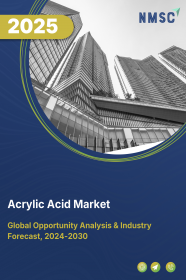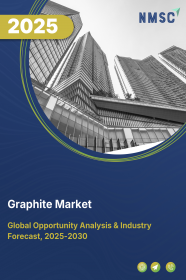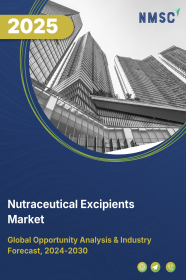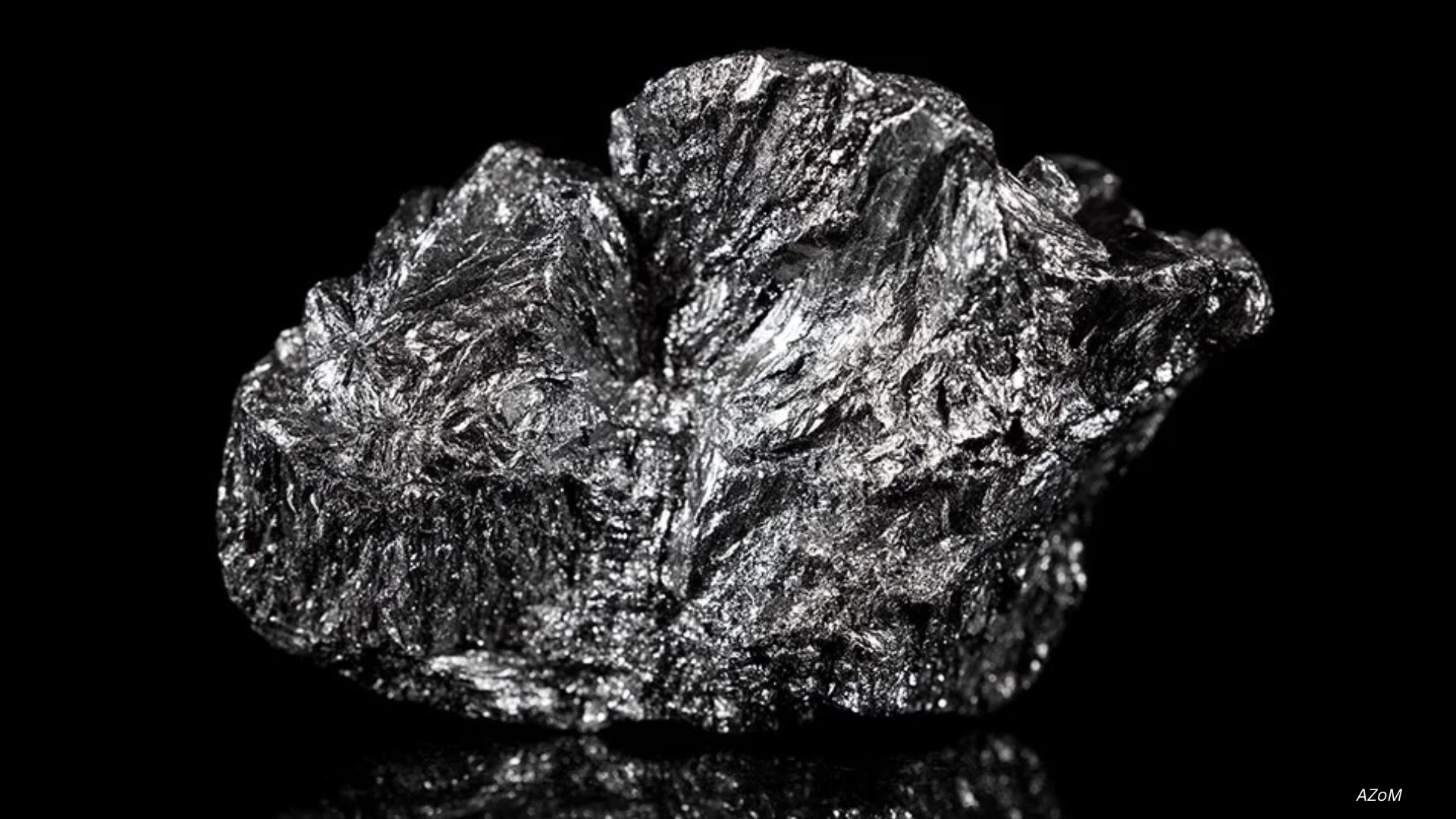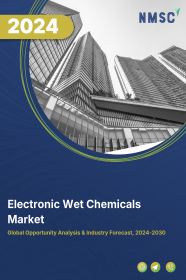
Electronic Wet Chemicals Market by Type (Acetic Acid, Isopropyl Alcohol, Hydrogen Peroxide, Hydrochloric Acid, Ammonium Hydroxide, and Hydrofluoric Acid), by Application (Semiconductor, IC Packaging, PCB, and Others), and by End-User (Consumer Goods, Automotive, Aerospace & defence, Medical, and Others) – Global Opportunity Analysis and Industry Forecast 2024-2030
Market Definition
The Electronic Wet Chemicals Market size was valued at USD 4.65 billion in 2023 and is predicted to reach USD 7.97 billion by 2030 with a CAGR of 8.0% from 2024-2030. Electronics wet chemicals refer to various chemical substances used in the manufacturing and processing of electronic components and devices. These chemicals play crucial roles in different stages of electronic production, including cleaning, etching, deposition, and surface modification. Common examples include cleaning agents such as isopropyl alcohol and acetone, etchants such as ferric chloride, deposition materials such as photoresists, and other solvents and modifiers essential for precision in electronic manufacturing. Moreover, electronic wet chemicals are fundamental components of the electronic manufacturing industry which facilitates crucial processes while posing environmental challenges. As the industry continues to innovate, it is crucial to prioritize the creation of safer alternatives and the adoption of sustainable practices to uphold technological progress.
Market Dynamics and Trends
The demand for electronic wet chemicals is propelled by the increasing adoption of advanced electronic components such as PCBs and ICs in modern manufacturing processes. These chemicals play a crucial role in various stages of electronic device production, including cleaning, etching, surface treatment, and deposition.
For instance, in October 2023, Merck launched a new line of green solvents for photoresist removal in chip production. These green solvents, specifically the AZ 910 Remover, offer a cost-effective and eco-friendly solution for semiconductor manufacturing processes.
Also, these solvents are designed to dissolve photoresist patterns efficiently, addressing the challenges posed by traditional solvents and enhancing the environmental sustainability of the manufacturing process. Furthermore, the rapid growth of semiconductor industry due to its crucial role in various electronic devices and systems is driving the overall market expansion.
This growth significantly impacts the electronics wet chemicals market as semiconductors constitute a substantial portion of its consumer base. As demand for semiconductors increases across various sectors including automotive, telecommunications, consumer electronics, and industrial automation, there is a parallel surge in the need for wet chemicals in semiconductor manufacturing.
According to a report published by the Semiconductor Industry Association, the global semiconductor industry revenue reached USD 47.6 billion in January 2024, marking a significant growth of 15.2% compared with January 2023 with a revenue of USD 41.3 billion. However, the substantial upfront expenditures associated with the manufacturing of electronic components in small- medium enterprise (SME) is restraining the overall growth of the market.
On the contrary, the increasing adoption of Internet of Things (IoT) and Artificial Intelligence (AI) technologies across various industries presents significant opportunities for the electronics wet chemicals market. These technologies leverage sophisticated semiconductor components produced through wet chemical processes for cleansing, etching, and surface alteration.
With the increasing demand for IoT and AI devices in key sectors such as smart homes, healthcare, and manufacturing, there is a growing requirement for specialized wet chemicals to guarantee precise manufacturing and peak performance. This smart integration of technologies is expected to show a significant growth opportunity for the market.
Market Segmentation and Scope of Study
The electronic wet chemicals market is segmented on the basis of type, application, end-user, and region. On the basis of type, the market can be divided into acetic acid, isopropyl alcohol, hydrogen peroxide, hydrochloric acid, ammonium hydroxide, and hydrofluoric acid. On the basis of application, the market is classified into semiconductor, IC packaging, PCB, and others. On the basis of end-user, it can be segmented into consumer goods, automotive, aerospace & defence, medical, and others. Geographic breakdown and analysis of each of the aforesaid segments include regions comprising North America, Europe, Asia-Pacific, and RoW.
Geographical Analysis
North-America holds the dominating share in the electronic wet chemical market and is expected to continue its dominance during the forecast period. This is attributed to factor such as the rising government initiatives in the countries including in U.S. and Canada for the manufacturing of semiconductor chips.
For instance, in August 2022, the U.S. government initiated The CHIPS and Science Act, to maximize domestic manufacturing of semiconductor chips. This Act has led to significant investments in semiconductors and electronics, development programs, and research and development initiatives to boost its supply chain in the region.
Also, the growing demand for electronic devices such as smartphones, tablets, laptops, and wearables are a significant driving factor for the electronics wet chemicals market in North America. As consumers worldwide continue to adopt and upgrade to newer electronic gadgets, manufacturers must produce a steady supply of these devices.
This demand leads to the increased requirements for electronic components and the wet chemicals used in their manufacturing processes. According to a data published by IPC International Inc., the total number of Electronics Manufacturing Service (EMS) shipments in North America increased by 5.1% in February 2023 compared to the previous year of 2022.
On the other hand, Asia-Pacific witnessed a steady rise in electronic wet chemical market owing to the rising electronics and semiconductor industry in countries including China, India, and Japan for manufacturing various components, materials, and equipment used in electronic devices. As the electronics industry grows, the need for wet chemicals utilized in essential manufacturing procedures including cleansing, etching, and surface enhancement also increases.
These chemicals are vital in maintaining the quality and performance of electronic components and devices. According to a data published by the International Trade Administration, India aims to become a global leader in semiconductors, with demand expected to surpass USD 80 billion by 2026 and USD 110 billion by 2030. The country is significantly dependent on imported semiconductors, with 95% originating from nations such as China, Taiwan, South Korea, and Singapore. Moreover, the government is focusing on establishing a robust semiconductor manufacturing ecosystem, offering significant growth opportunities for U.S. companies in the sector.
Furthermore, the presence of regional companies that are engaged in various business strategies including product launches to boost the growth of the electronic wet chemicals market. For instance, in October 2021, Panasonic introduced a 5-kW pure hydrogen fuel cell generator, setting a new industry standard with its remarkable electrical efficiency of 56%. This innovative generator functions by harnessing power through a chemical reaction involving high-purity hydrogen and oxygen present in the air.
Competitive Landscape
The electronic wet chemicals market comprises various market players including Avantor Inc., BASF SE, Entegris, Honeywell International, Inc., Kanto Chemicals Co. Inc., Linde Plc, Solvay, Fujifilm Corporation, Technic Inc., Songwon and others. These market players are adopting various strategies such as product launches and acquisitions to maintain their dominance in the electronic wet chemicals market.
For instance, in May 2023, Fujifilm acquired Entegris' Electronic Chemicals business for USD 700 million and rebranding it as FUJIFILM Electronic Materials Process Chemicals. The deal aims to enhance Fujifilm's electronic materials manufacturing capabilities, including High Purity Process Chemicals used in semiconductor production.
Also, in July 2022 Entegris acquired CMC Materials. This acquisition solidified its position in the industry, with the most comprehensive portfolio and enhanced operating capabilities for applications in the fab environment and across the semiconductor ecosystem.
Key Benefits
-
The report provides quantitative analysis and estimations of the electronic wet chemicals market from 2024 to 2030, which assists in identifying the prevailing market opportunities.
-
The study comprises a deep dive analysis of the electronic wet chemicals market including the current and future trends to depict prevalent investment pockets in the market.
-
Information related to key drivers, restraints, and opportunities and their impact on the electronic wet chemicals market is provided in the report.
-
Competitive analysis of the players, along with their market share is provided in the report.
-
SWOT analysis and Porters Five Forces model is elaborated in the study.
-
Value chain analysis in the market study provides a clear picture of roles of stakeholders.
Key Market Segments
By Type
-
Acetic Acid
-
Isopropyl Alcohol
-
Hydrogen Peroxide
-
Hydrochloric Acid
-
Ammonium Hydroxide
-
Hydrofluoric Acid
By Application
-
Semiconductor
-
IC Packaging
-
PCB
-
Others
By End User
-
Consumer Goods
-
Automotive
-
Aerospace & defence
-
Medical
-
Others
By Region
-
North America
-
The U.S.
-
Canada
-
Mexico
-
-
Europe
-
The UK
-
Germany
-
France
-
Italy
-
Spain
-
Denmark
-
Netherlands
-
Finland
-
Sweden
-
Norway
-
Russia
-
Rest of Europe
-
-
Asia-Pacific
-
China
-
Japan
-
India
-
South Korea
-
Australia
-
Indonesia
-
Singapore
-
Taiwan
-
Thailand
-
Rest of Asia Pacific
-
-
Rest of the World
-
Latin America
-
Middle East
-
Africa
-
REPORT SCOPE AND SEGMENTATION:
|
Parameters |
Details |
|
Market Size in 2023 |
USD 4.65 Billion |
|
Revenue Forecast in 2030 |
USD 7.97 Billion |
|
Growth Rate |
CAGR of 8.0% from 2024 to 2030 |
|
Analysis Period |
2023–2030 |
|
Base Year Considered |
2023 |
|
Forecast Period |
2024–2030 |
|
Market Size Estimation |
Billion (USD) |
|
Growth Factors |
|
|
Countries Covered |
28 |
|
Companies Profiled |
10 |
|
Market Share |
Available for 10 companies |
|
Customization Scope |
Free customization (equivalent up to 80 working hours of analysts) after purchase. Addition or alteration to country, regional, and segment scope. |
|
Pricing and Purchase Options |
Avail customized purchase options to meet your exact research needs. |
KEY PLAYERS
-
Avantor Inc.
-
BASF SE
-
Entegris
-
Honeywell International, Inc.
-
Kanto Chemicals Co. Inc.
-
Linde Plc
-
Solvay
-
Fujifilm Corporation
-
Technic Inc.
-
Songwon




















 Speak to Our Analyst
Speak to Our Analyst



